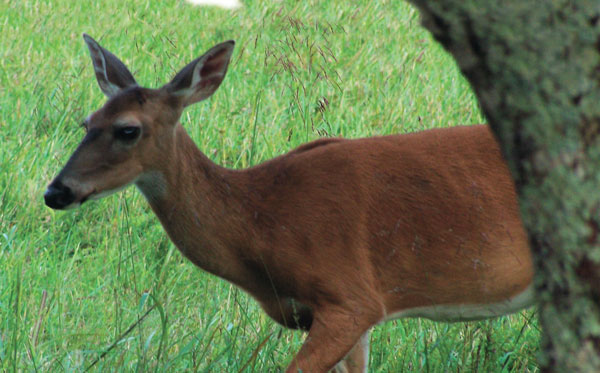
Shooting does should be part of any deer management plan.
Way back yonder, the year I broke in as an outdoor writer, I heard a wildlife biologist tell a crowd at an outdoor show that the only thing that interested hunters about deer management was whether or not it could put an 8-point buck under their tree stand on a regular basis.
In the intervening 25 years, deer hunting has become an industry unto itself, with hunters now planting food for deer, taking their photos from remote locations, blowing into all kinds of plastic tubes and hitting plastic horns together and smelling just so — all in hopes of getting that trophy-of-a-lifetime broadside at 75 yards.
Throughout this magazine’s pages, you’ll find all kinds of tips and tactics for getting Bullwinkle in your sights. Surprise, not everybody agrees on how everything should be done. The thing that strikes me immediately is the different ways that deer hunters approach antlerless deer.
Most biologists — and I believe that Charles Ruth, the SCDNR’s deer-project leader, is in this group — believe that the earlier you can start to “thin” the herd of does, the better. There are a number of reasons behind this argument.
By reducing the buck/doe ratio before the onset of the peak of breeding, fewer bucks are involved in breeding, which brings more bucks out of the rut and enters the winter in better shape; the alpha males in the herd get to pass down their genes to the next generation. And by taking does as soon as it’s legal, you cut down on the overall size of the herd and leave more groceries for the bucks and the does that do breed and raise fawns, leaving them healthier.
On the other hand, will taking a few does early in the season cut down your chances on taking that big buck the week before Halloween when the rut kicks in? As one expert opined, nothing will educate a big buck like people wandering around the woods, trailing a wounded deer, then dragging it out once it expires and is located. As one of my buddies asked, how do I know that doe I’ve decided to turn into chops, steaks and sausage doesn’t have “Charlie” a couple of minutes behind, on her trail, ready to come into range about shortly after your rifle cracks?
That’s honestly a question I can’t answer, but I know what some of the parameters I have set down for myself are.
Being color-blind to reds and greens, I don’t hunt with a bow, because blood-trailing is a real chore when you can’t see red. So that knocks out a lot of early-season doe opportunities.
The other thing I do is, I try not to shoot lone does sneaking through the woods. It’s been my experience, and I’ve heard similarly from other hunters, that does that have yearlings trailing along behind are less likely to have big bucks sniffing out their tracks.
I’ll go a step further: I try only to shoot does that have two yearlings accompanying them. I learned years ago that the longer a doe lives, the more likely she is to drop twin fans, and a greater percentage of doe fawns. So a big, mature doe with twin fawns is liable to be 3½ or 4½ years old, past her prime as far as having lots of buck babies. Those 1½-year-old does that either weren’t bred as a yearling or had one fawn, those are the ones I want to keep in the herd.
If that’s age discrimination, send the law after me.




Be the first to comment